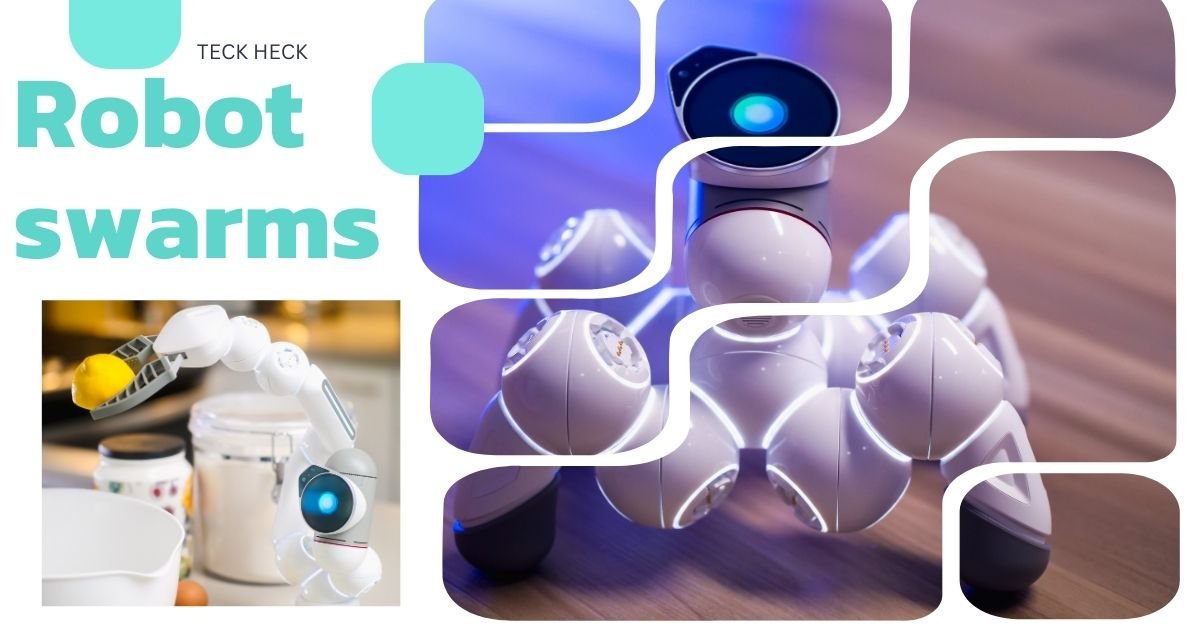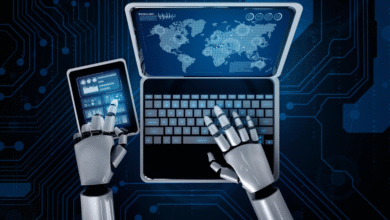
Robot Swarms
Engineers, scientists, and technologists have all been fascinated by the idea of robot swarms in recent years. Robot swarms are modeled after the collective behavior of social insects such as termites, ants, and bees. Their goal is to develop autonomous systems that can execute complex tasks through decentralized coordination. This article examines robot swarms’ potential, uses, difficulties, and the technology that makes this fascinating topic possible.
Robot Swarms: What Are They?
A collection of autonomous robots that cooperate to finish a task or set of tasks is referred to as a robot swarm. Robot swarms are usually decentralized, in contrast to traditional robotic systems, which are controlled by a single central control unit.
Although each robot in the swarm works independently, they all interact and collaborate, frequently using basic local rules to carry out complex actions.
These individual robots interact to produce the swarm’s aggregate behavior, which, like in nature, promotes flexibility and effective problem-solving. The following are important traits of robot swarms:
Decentralization: The group is not led by a single robot or central controller. Every robot interacts with other robots and takes action based on local knowledge.
Scalability: By adding more robots to the swarm, the system may readily grow, and as the group gets bigger, so does the collective intelligence.
Flexibility: Swarms can instantly adjust to modifications in their surroundings or mission specifications.
Redundancy: The system is more durable and strong because if one robot fails, the remaining swarm members can still complete the task.

Robot Swarm Applications
With potential advantages in many different domains, robot swarms are being investigated for a broad range of applications. Among the most promising fields are:
1. Search and Rescue Activities:
Robot swarms can be used to find survivors, move through debris, and collect vital data in disaster situations such as earthquakes, fallen buildings, or dangerous settings. Because of their adaptability and decentralized structure, swarms can swiftly cover vast regions and are resistant to individual robot failures.
2. Monitoring and Exploration of the Environment:
Robotic swarms could be employed to monitor the environment in dangerous or remote areas, such as deep-sea exploration, space missions, or wildlife observation. These robots can cover vast and challenging-to-reach areas, gather data, and relay it back to researchers by cooperating in groups.
3. Forestry and Agriculture:
In precision agriculture, robot swarms could be used to plant seeds, check on the health of crops, and even harvest them. With little assistance from humans, these collaborative robots might effectively manage large tracts of agricultural.
4. Production and Storage Facilities:
Robot swarms have the potential to completely transform the production, sorting, and storage of items in industrial settings. When several robots collaborate, they might complete jobs like inventory management, packaging, and assembly.
5. Defense and Military:
Applications for swarm robotics in defense, ranging from reconnaissance to combat support, could be extremely important. Robot swarms could supply supplies, overpower enemy fortifications, or carry out missions too risky for human soldiers if they worked together as a cohesive unit.
Obstacles and Restrictions
Even with their great potential, there are still several obstacles to overcome in the creation and application of robot swarms:
1. Communication and Coordination:
One of the biggest challenges is making sure that robots can cooperate and communicate efficiently in real time. Creating communication protocols that enable effective data transmission without overloading the system is crucial when numerous robots are cooperating.

Furthermore, one of the main challenges in swarm intelligence is making sure that the robots decide together without the need for a central controller.
-
Independence and Making Decisions:
Each robot in a swarm needs to be able to make decisions on its own using local knowledge in order for the group to work well. The challenge of creating algorithms that let robots “think” on their own while also guaranteeing that they cooperate as a swarm is a challenging one that is continuously being researched.
-
Sturdiness and Tolerance for Faults:
A single robot in a swarm failing shouldn’t disrupt the entire process. For robot swarms to be reliable, particularly in search and rescue applications, it is essential to build robots that can recover from failures, adjust to changing circumstances, and compensate for the loss of a unit.
-
Management of Energy:
A high number of robots can have a substantial power consumption.
Maintaining long-term operations of robot swarms will need the development of energy-efficient robots and the investigation of novel energy sources or recharging techniques (such as wireless charging).
5. Security and Ethical Issues:
Like many other emerging technologies, robot swarms pose possible ethical and security issues. Their usage in surveillance, warfare, and invasions of privacy are all causes for concern. For swarm robotics to be successfully incorporated into society, they must be utilized for constructive, advantageous goals while reducing hazards.
The Prospects for Robotic Swarms
Robot swarms are finding more and more potential uses as technology develops. Swarms will become much more powerful, adaptable, and effective as a result of developments in sensor technology, artificial intelligence, and machine learning.
Furthermore, robot swarms will become even more autonomous as a result of the development of increasingly advanced swarm intelligence algorithms, enabling them to carry out activities that are too hazardous or difficult for humans.
Integrating human-robot cooperation within a swarm is an intriguing prospect. In a variety of applications, this would allow people to collaborate with swarms, offering supervision and direction while letting robots take on riskier or more repetitive jobs.
Robot swarms have the potential to change businesses and enhance lives in ways that we have only just begun to investigate. These autonomous systems will be crucial in forming the next generation of robotics as long as research and development continue.
In conclusion
A potent and novel approach to robotics, robot swarms use the combined intelligence of numerous robots to tackle challenging issues. Swarm robots have immense potential benefits, from enhancing search and rescue operations to transforming manufacturing and environmental monitoring, even if there are still numerous obstacles to overcome. Robot swarms are expected to play a significant role in the development of autonomous systems in the future as long as research and technological developments continue.





